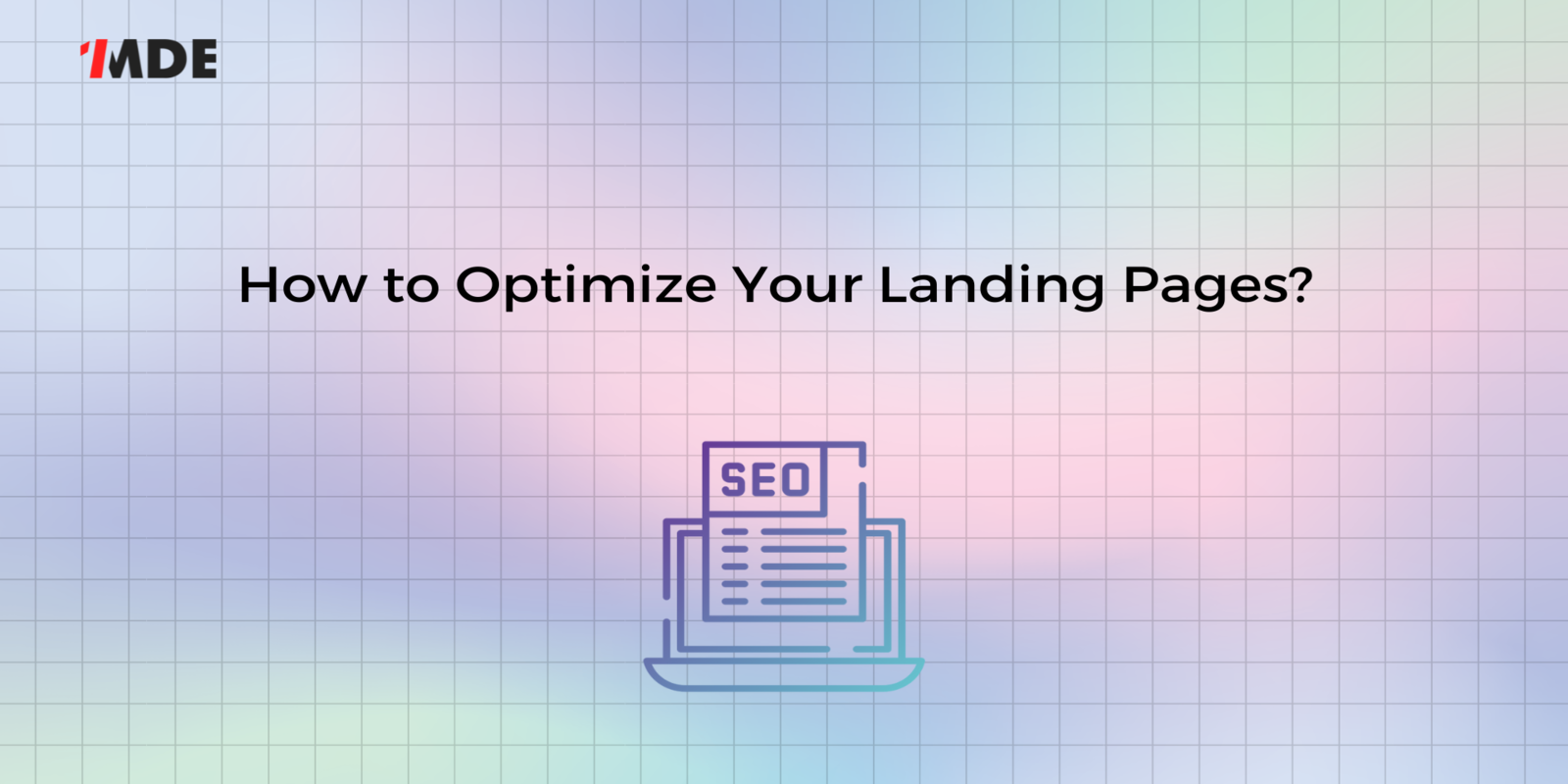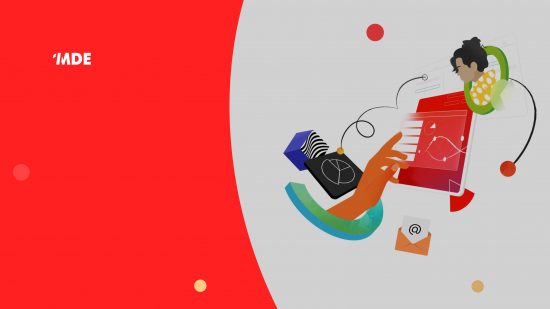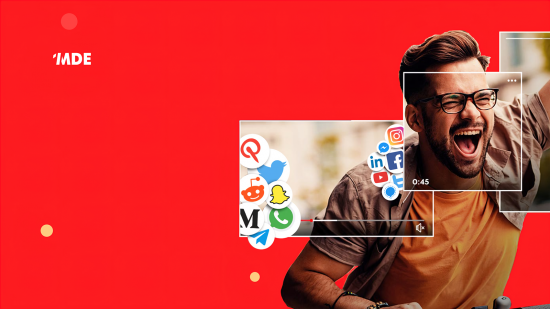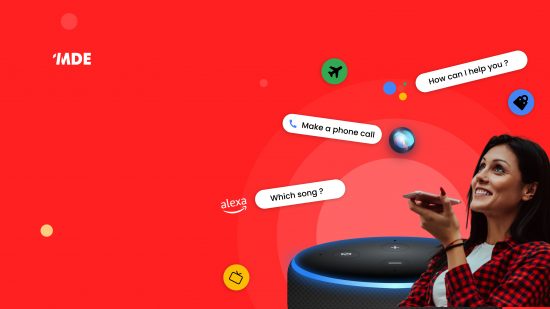Nov. 2
How to Optimize Your Landing Pages?
Entrepreneurs prefer landing pages because of the high conversions over regular websites. The landing page is ideal for direct and hot traffic, such as contextual advertising. But since SEO is a more profitable option in the long term, everyone is trying to kill two birds with one stone – to get a conversion site and bring it to the TOP 10 search engines.
Does this mean SEO will be the fastest and easiest process possible? Unlikely. The general promotion points will be similar, but there are rules and principles for search engine optimization of one-page pages.
Does landing page hurt your SEO?
Increasing sales remains the primary goal of the landing page. You need to focus on this, not just growing traffic from regular search results. It is necessary to prepare the project carefully: write a selling text, think over the functionality, and arrange the design. When everything is set up, you can start promoting the landing page.
Many SEOs question the need for one-page search engine optimization. As if landing page search engine optimization is practically pointless. In part, these arguments are justified. Landing pages do not have internal linking, and there is no way to place a lot of text into account search phrases. The content is practically not updated, the leading behavioral factors are low.

While PPC ads support the bulk of the landing page, SEO can play a role too. But only if your project meets the following criteria:
- If your landing page is for long-term use, it makes sense to use a tool like SEO.
- There are many inquiries about a product or service, and in this case, it is also worth resorting to search engine promotion. If the semantics are low or close to zero, don’t waste your time.
- You are planning to promote non-competitive phrases. Don’t confuse lack of requests and low competition. Many people successfully promote their resources for keywords that few people use, and it is easier to get to the top positions with them than with the usual ones.
- There are funds for additional online marketing tools. This refers to the costs of attracting branded traffic, crowd marketing, SMM, etc.
What should you bring to the attention to get your landing page the best results?
- Determine your target audience. Analyze what group of people your business is targeting and give them what they want.
- State your proposal clearly. Attract a potential client with a bright headline; make him want to do business with you.
- Add relevant text content. Your landing page content must match your ad’s content, positively impacting both the landing page conversion and the ad quality indicator.
- Briefly describe the benefits. Be able to concisely and clearly convey to a potential client the benefits of working with you. Contact him directly and on the case.
- Add a call to action. “Order now!”, “Hurry up to buy!” “Call!” In the end. Encourage the prospect to make a decision. But don’t overuse it! One call to action is enough for one page positioned for any visitor to see.
- Balance the amount of text and images. A capacious informative text and bright emotional pictures should harmoniously complement each other. Try to find a middle ground.
- Arrange the page elements so that they are easy to read. The fewer users will try to understand what you are offering them, the better it will affect the effectiveness of your landing page. No one will waste time looking for a root, and they have come to you for a ready-made solution.
- Use emotional triggers. A smile adjusts the interlocutor to himself and changes to the positive. So let a smiling person take a look at your potential customers from your landing page. Think about what else you can emotionally interest the user with.
- Remove any distractions: unnecessary buttons and menu items, active links, and an overabundance of pictures. Focus the user’s attention on your proposal.
- Don’t include a lot of unnecessary information. Your potential clients do not want to read long tracts about the products/services provided, your firm’s history, or employee biographies. They want to know what they will get from working with you and how beneficial it is. So tell them exactly that. However, a small summary of, say, your completed projects in the form of infographics will only be an advantage.
- Try to build up a sense of trust. “Indeed, can they be trusted?” – the user asks himself. Prove that you can by providing information about a 100% guarantee of the result, money-back guarantee, deadlines for completion of work, delivery times, absence of hidden conditions, etc.
- Observe the privacy policy. In addition to being a must for the user information you receive, be sure to mention this on your landing page. People are reluctant to share personal information, and you need to address their concerns.
- Post grateful customer reviews on your landing page. The social factor of approval plays a vital role in decision-making. Plus, this is another argument in favor of trusting you. But by no means write fake reviews – it’s not professional or ethical.
- Write in simple and understandable language. Avoid florid language such as politics, professional terms, complex sentence structures, etc. Use good speech and keep it simple.
- Test every element of your page. Testing is better than any hypothesis in technology to improve the effectiveness of Internet marketing. Try different variations of images, text, layout, button colors, and more. Try creating multiple landing page variations with various suggestions. Choose the best one!
- Landing page optimization and its load time. It is advisable to remove unused parts from the code, reduce the number of widgets, do not use animation and audio, work correctly with scripts, etc. Agree, if the site did not load immediately, the desire to close the browser tab grows exponentially with the waiting time.
What are the impacts of landing pages on SEO?
Let’s first make sure that SEO for landing page makes sense. Let’s get acquainted with the advantages of the method:
- No duplicates. Do not be perplexed by the frequent attacks of online stores, which have a lot of duplicate pages. This is the main problem that leads to ranking difficulties. Duplicates are completely eliminated on the landing page;
- Simple tracking and elimination of broken links. The Landing Page concept provides for the absence or minimum of links within the resource. Therefore, 404 pages will not be indexed;
- Concentration of weight on the home page. You don’t need to set up internal linking. For this reason, all the weight is on the home page, and this will seem significant for Google.
However, SEO for landing page has its disadvantages:
- Limited semantic core. A small number of high-frequency and low-frequency queries can be effectively used on one page. Ideally, if up to 20, otherwise re-optimization is possible;
- It is not easy for landing pages to create an inbound link profile. For this reason, crowd marketing comes to the rescue;
- Location. In most cases, the landing page is promoted in the region. Meaning, it has a clear attachment to the place. Consequently, there is less potential traffic.
Even with these points in mind, promoting a one-page page is possible and very successful.

Should PPC and SEO campaigns have different landing pages?
PPC and SEO promotion methods differ in the principle of customization and implementation.
In general, the SEO method of landing page promotion is the main traffic channel, and contextual advertising in this case acts as an auxiliary one. The choice of promotion method depends on the goals set. If a landing page is created for short-term purposes (for example, for holding a promotion for a limited period of time), then the choice of contextual advertising will be more appropriate. If the landing page is being developed for an indefinite period, then it makes sense to consider the SEO option.
Besides, a lot depends on the type of business. In some niches, it is better to use only the checkpoint. Everything is very individual and subject to analysis.
First, let’s define the goals of both methods of landing page promotion. The purpose of PPC is to display site advertisements at the top or bottom of the search results page. The tasks of the SEO are different – to bring the site to the TOP-10 for key queries in the search results. Therefore, these are completely different methods of promotion, which are united by one task – to get the maximum amount of targeted traffic.
Let’s consider the disadvantages and advantages of types of promotion, depending on various criteria.
Formation and control of the budget.
If the landing page is created in a short time, then contextual advertising will cost less. It is enough for the client to pay for the services of a specialist, wait for the advertisement to turn on and wait for the first visitors on the same day. SEO, on the other hand, requires careful preparation, choosing the right and best promotion method, analyzing niche, competitors, and other marketing criteria. Consequently, this type of promotion will cost more. But at the same time, SEO in the long term of the landing page will be much more effective.
Number of visits.
In terms of the effectiveness of both promotion methods, SEO wins. With its help, much more targeted traffic will come than with the help of contextual advertising. However, in order to get a stable stream of the target audience, it is necessary to make large investments and constantly be on the alert, controlling the actions of visitors and constantly changing and adjusting the factors on which the final result depends.
PR campaign management.
Contextual advertising in this case is the best option. Setting up a PPC takes hours, a wide range of filters allows you to control the content of your ad. You can add the region of the country the landing page is targeting, add search terms, and more. In this case, the SEO method is very limited and you need to have a library of knowledge and experience to achieve good results.
The speed of the first effect.
As mentioned above, the first visitors to your landing page arrive on the day you set up your PPC. It will take at least a month for a landing page to reach the top of search results. This means that all the time, potential buyers will be moving to buyers who will have a conversion rate first.
Long-term result.
After launching SEO promotion and achieving certain results, the effect will last much longer. Even if the promotion work is stopped, the action will be valid for some time. In this case, contextual advertising becomes ineffective as soon as its payment ends.
It is reasonable to analyze the goals of creating a landing page as thoroughly as possible. And based on our experience, we can say that the best way to promote is both SEO and PPC.
Do landing pages rank on Google?
Promotion of landing pages in search engines is a difficult task compared to the promotion of classic sites, and this is mainly due to the structure of the landing page, or rather, with its absence.
However, a landing page is an effective tool for attracting traffic and further conversion (on average, 2-5 times higher than classic sites) from channels such as contextual advertising, targeted advertising, retargeting, etc.
The main page of the landing page should be optimized for medium-frequency queries for big cities or high-frequency queries for the regions. Let us explain, and large towns have reasonably high competition. For high-frequency requests, landing pages will not break into the TOP since it is seriously inferior to classic sites in terms of relevance.
What is included in page optimization:
- Writing the <Title> meta tag – should be 70 characters long and convey the site’s essence. The name explains what you do. The title should indicate the key queries that are interesting to your users and for which you are searched on the Internet);
- Writing the <Description> meta tag – should be about 150-200 characters long. This is the same second and third lines in Google search results, which you see as a site description. The description describes exactly what your site is about. It cannot be written by keywords or in any form. It should be so attractive that after reading it, a person wants to go to your site. It is desirable to describe in it the most important advantage of your business or provocation for a visitor);
- The presence of a heading in the code <h1>, <h2> with the entry of keywords;
- The entry of the keyword into the content of the landing page. We will not give numerical values - do as much as necessary without losing the attractiveness of the texts for users;
- Mandatory responsive version of the Landing Page;
- Conduct a technical audit of your landing page. Be sure to check the speed at which the page is loading (check here at Page Speed Insight), if the site is typed correctly, and if there are any errors in the robots.txt file. Specify the region and main mirror of the landing page. Make a mobile version or use a responsive design;
- Monitor your time on site (up to 1.5 minutes) and bounce rate (down to 10%);
- We recommend placing natural links on local external resources: public or secret message boards. Get links from partner sites or your other projects.
Why is a landing page important?
A landing page can significantly increase conversions (purchases or signups) as landing pages are designed to attract potential customer and maximize user engagement with the targeted action. If you direct visitors from all advertisements, for example, to the home page of the site, then you can drastically reduce conversions and fly out of the pipe.
A single landing page is a powerful network that a visitor gets into by swallowing an ad hook. As a rule, its design repeats the style and language of the advertising campaign that interested the user. And here he is all yours – he can be directed in the right direction, like a puppeteer, he is still interested. Such a page is perceived as a whole, the transition from advertising to direct offer (buy / order / click) is soft, if not noticeable at all.
You need a landing page to quickly grab attention and keep the person interested in what you are about to talk to. No home page is capable of this, because on it you have to introduce yourself, tell who you are and what you are, what you have to offer, etc. Tons of information, no matter how useful and necessary it may be, will not sell their product, you need a landing page here.
You can successfully promote your landing page to the top search engines if you are concerned about the quality of internal and external optimization. Fortunately, these activities are not much different from working with regular sites. A successful result will be provided that three conditions are met: the absence of unnecessary information, unique content and competent graphic design.
Of course, you need to be patient. Even if you thoroughly comply with all the requirements, carry out 100% high-quality optimization, the first results of landing page promotion will bring at least 2-3 months.
Our specialists at 1MDE are always ready to help you with landing page development, SEO strategy, and PPC campaigns at any time. Just drop us a message to discuss your project!
Similar articles






